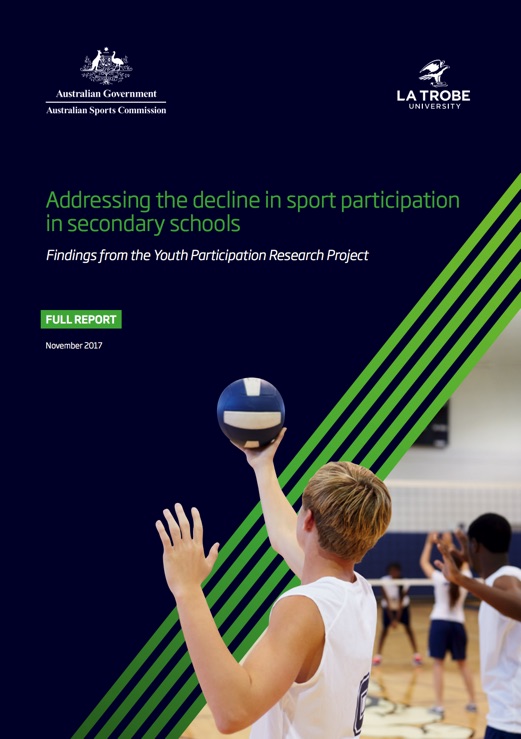It is important for young people to play sport and stay active for their physical and mental health and wellbeing, and to develop their physical literacy. An early connection to sport can also encourage a lifelong love of sport and physical activity.
Coaches, teachers, sporting organisations and parents can help get young people moving again by:
- understanding who their disengaged youth are and their barriers and motivations
- building the sport-in-school partnership
- using smart program delivery, deliver and design strategies.
Sporting organisations can target inactive youth through their existing and new sport programs as outlined below.
Development areas for existing sport programs
Develop your deliverer workforce to better identify and engage disengaged secondary students, focussing on managing group dynamics to promote positive student interaction within their participant group.
Provide deliverers with the tools and resources to more effectively communicate with teachers, to define shared objectives and improve sport program administration issues.
Enhance existing sport programs with a ‘fitness-based’ program, targeting disengaged secondary school students to build their confidence, and provide the knowledge and skills they are seeking to support their shift to a healthier lifestyle.
Enhance existing sport programs with a ‘stress relief’ program for those students who can no longer commit to traditional sport activities. This could include a social competition for a traditional sport (suited to more-confident students) or a series of alternative sport or physical activities that focus on learning and developing new skills (suited to less-confident students).
Develop tools and resources to support deliverers and teachers to promote and build a positive sport culture within the school community. Include strategies to reach families to encourage them to support their child’s sport participation.
Develop and provide deliverers with guidelines for building more positive student group dynamics. Include considerations for dividing program cohorts by skill and gender to increase engagement.
Consider ways your sporting organisation can achieve a balance between a prescribed program and allowing deliverers the flexibility to build a relationship with a school through tailored programs. Base this balance on the objectives and desired outcomes for the sport in the secondary school market.
Understand how sport can meet the needs and motivations of the various student cohorts, and develop programs based on this understanding. Establish relevant value propositions to target the identified market/s.
Provide deliverers with an open communication channel to better monitor and control program delivery, seek support, and provide feedback. Genuinely consider this programmatic feedback.
Consider the 14 Program design and delivery principles when designing a new program or reviewing an existing program for secondary schools.
Program design and delivery principles for new sporting programs
Objectives of the program are negotiated, agreed to, shared and communicated between the funding body, school and sport
Program administration is clear, comprehensive and consistent, and utilises open and effective communication channels. Use the 14 Pre-Program Questions to support this communication (see full report)
Program delivery is flexible and adaptable to each secondary school context
School sport culture and perceptions of sport are considered in the design and delivery of the program
Program design and delivery is innovative to overcome entrenched barriers experienced by the student, teacher, school or community
Student-centric program design is applied and incorporates empathetic delivery based on an understanding of student motivations and influences
Skill building and developing mental resilience are dually incorporated in the program design
Empower students with the opportunity to choose their activities
The program’s value to the student, school and greater school community is clearly demonstrated
Opportunities to connect with the local community and sport clubs are provided to encourage transition from school-based to community-based sport participation
Three program elements are offered (either within a single program or as three separate offerings) and include: activities based on building fitness and confidence; a modified social competition; a traditional sport program based on building and refining skills and game play.
Program cohort is divided by gender for specific activities, sessions or days
Program cohort is divided by skill level for sports with an emphasis on competition, either in their traditional or programmatic format (for specific activities, sessions or days)
A skilled deliverer conducts the program and receives support from their sporting organisation to modify activities and program delivery based on the needs of the school and student cohort.
Addressing the decline in sport participation in secondary schools: Full report
The report provides tips for coaches, teachers, sporting organisations and parents, including:
- deeper insights into the barriers faced by young people
- tips for strengthening your sport-in-school relationships
- strategies to transition students into community sport
- how to build a positive sport-in-school culture
- guidance on program delivery, deliverer and design strategies.
The information and tools provided are the result of a research partnership between Sport Australia and La Trobe University’s Centre for Sport and Social Impact and the generous support of national sporting organisations, sport deliverers, students, teachers, schools and parents/guardians who contributed to this research.
Alternatively, you can read the Addressing the decline in sport participation in secondary schools executive summary.
